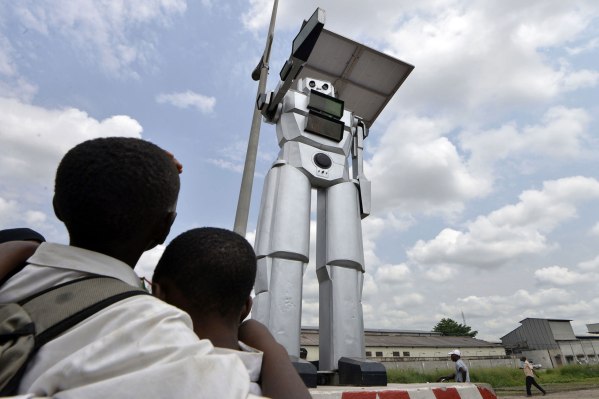Walmart is experimenting with autonomous shopping carts. Domino’s, Uber and Auro are heavily invested in autonomous driving research. Robots are serving as security guards, performing surgery, checking inventory at grocery stores, assisting in warehouse work, delivering our room service and even hunting for underwater treasure.
As robotics begins to leave controlled environments and navigate the real world alongside humans, the question remains: How will this affect the way we interact, work and talk to not only robots, but one another?
Our interactions with machines
It’s already becoming commonplace to see drones, survey robots and autonomous vehicles with drivers on autopilot. These aren’t just visions of grandeur in a Sci-Fi novel; they’re our reality now. And one of the most surprising results of the rise of robotics in our daily lives is that most people don’t seem to notice them at all.
As robots used for autonomous delivery, for example, become more prevalent, you can expect that your walk to work will be accompanied not only by other people with places to be, but also by robots of different shapes and sizes, intermingling with the crowd seamlessly on their way to deliver.
As you’re grocery shopping, drones will be flying overhead, on their way to check inventory while your automated shopping cart rolls itself alongside you. Meanwhile, in the back warehouse, robots will be busy retrieving items and moving goods from one spot to another for order fulfillment.
It can already be seen at Stanford Shopping Center and in Uber’s inspection lot in San Francisco. Our offices, malls and retail stores will be protected by security guards of the machine kind, accompanying human patrollers.
There will be robots like the OceanOne, a mermaid-like robot that works alongside divers for deep-sea missions and treasure hunting to retrieve items and data at deeper depths than any diver can go. In fact, there will likely be an array of robots that work with us to go where humans haven’t yet dared to go.
How will the presence of robots change local laws and regulations?
Robots will set new precedents for who and what are allowed to travel in public spaces. Currently, the policies of local governments on autonomous sidewalk vehicles varies from city to city and country to country. But one thing is for sure. As robots become more of a norm, legislatures will have to pay attention and define regulations and protections for the robots and companies using them.
European Parliament drafted a motion this May calling on the European Commission to consider “that at least the most sophisticated autonomous robots could be established as having the status of electronic persons with specific rights and obligations.” This would saddle corporations with the responsibility of paying social security for their robots, just as they would human workers.
It’s already becoming commonplace to see drones, survey robots and autonomous vehicles with drivers on autopilot.
The draft bill also proposes a register that would equate autonomous bots to funds established to cover its legal liabilities or that organizations should have to declare savings they make in social security contributions by using robotics instead of people, for tax purposes. The motion has seen huge push back from organizations like Germany’s VDMA and will need to win a lot of political backing in Parliament to pass. Regardless of the outcome, the motion has brought to light important questions about robot rights and human responsibilities to them.
While there are many places in the U.S. where robots are already specifically allowed to operate, other states have not yet needed to specifically address regulations. Washington, D.C. recently lead the way in U.S. robot regulations when it passed a law called the “Personal Delivery Device Act of 2016” outlining the rules and regulations for delivery robots and, in turn, specifically allowing these kinds of robots to operate in the nation’s capital. This law will serve as an example as more cities and states realize the importance of addressing this new technology.
The Federal Aviation Administration, after a significant amount of pressure from manufacturers and political figures, in June published final operational rules for the commercial use of small drones, those weighing less than 55 pounds. The rules turned out to be stricter than many had hoped, requiring pilots to be certified and within eyesight of the drone at all times. Pilots also can’t be in a moving vehicle and will have to be vetted by the TSA.
Amongst other regulations, the drones can only fly at a maximum altitude of 400 feet. While reaction to the rules have been reportedly positive, the impact did drive Amazon to partner with the U.K. Government to begin drone delivery testing in more rural and suburban areas. The U.K. Civil Aviation Authority gave Amazon the delivery testing permissions that it was denied through the FAA regulations.
There’s no doubt that the rise of autonomous robots will change the way we perceive many daily tasks. It will alter the way we interact with service providers and couriers. Our perception of robots will continue to evolve as they become commonplace on the road, in our shopping centers and in our homes. On our daily commute, in our jobs and during our leisure time, robot-human interaction will become the norm.
